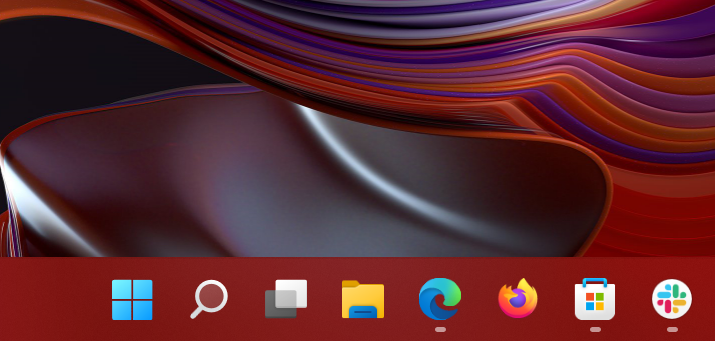Microsoft announced that Windows 11 would be getting a few updates of note this month, and today, those updates are available for most Windows 11 PCs to install. The full list includes a preview of Windows 11’s virtualized Android apps, new versions of Notepad and Media Player (the latter of which replaces Microsoft Groove), and a handful of updates to the Taskbar that add new features and restore a couple of old ones.
To get the taskbar improvements, you’ll need to go to Windows Update and manually install the 2022-02 Update Preview; otherwise, you’ll get it automatically in the next few weeks. The Media Player and Notepad app updates will be downloaded via the Microsoft Store with no extra effort involved, unless you’ve manually switched off Microsoft Store app updates. And running Android apps in Windows 11 requires slightly higher system requirements than Windows 11 itself, including an 8th-gen-or-newer Intel Core i3 processor or a 3000-series-or-newer AMD Ryzen CPU, an SSD instead of a hard drive, 8GB or more of memory, and virtualization support that has been enabled in your PC’s firmware.
If you already knew these updates were coming, the most interesting bit comes toward the end of Microsoft’s blog post, where the company says it plans to keep bringing new features to Windows 11 through a “variety of update mechanisms.” The promised “continuous innovation” fits with the company’s plans to make its Windows 11 preview builds more experimental in 2022. It also signals an ongoing shift toward a more web-browser-y model of small-but-frequent feature updates rather than holding back big changes for once-per-year servicing updates as Microsoft generally did during the Windows 10 era.
That’s not to say that Windows 10 never made user interface tweaks in between servicing updates, especially as apps like Edge began to be updated independently of the rest of the operating system, but significant UI and feature changes did still usually wait for the then-twice-yearly major updates. The downside, especially early on, was that those updates could be buggy and disruptive. Servicing updates are still likely to be where Microsoft makes big new feature additions and does more extensive work updating Windows’ underpinnings. But the company clearly sees no need to tie smaller quality-of-life improvements to new Windows versions that will need a whole lot more testing and validation.
Listing image by Microsoft



3175x175(CURRENT).thumb.jpg.b05acc060982b36f5891ba728e6d953c.jpg)
Recommended Comments
There are no comments to display.
Join the conversation
You can post now and register later. If you have an account, sign in now to post with your account.
Note: Your post will require moderator approval before it will be visible.